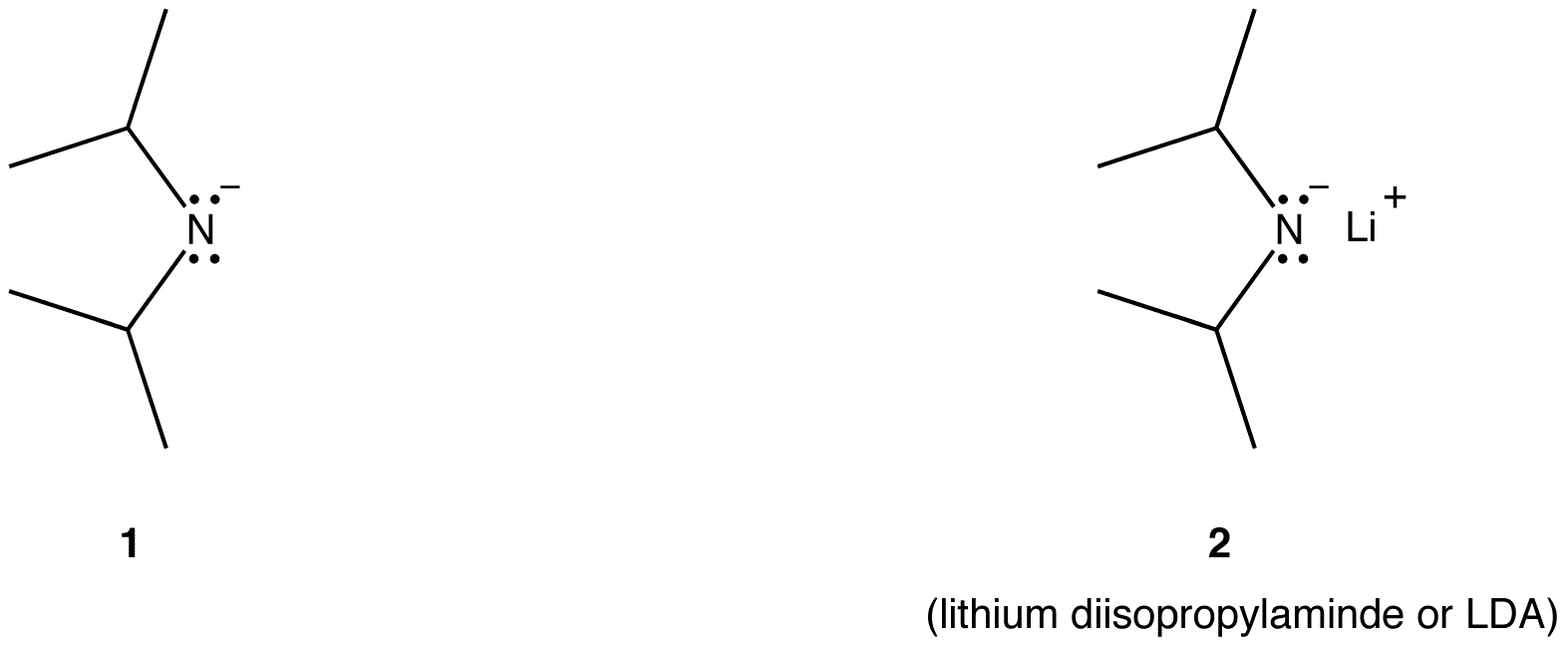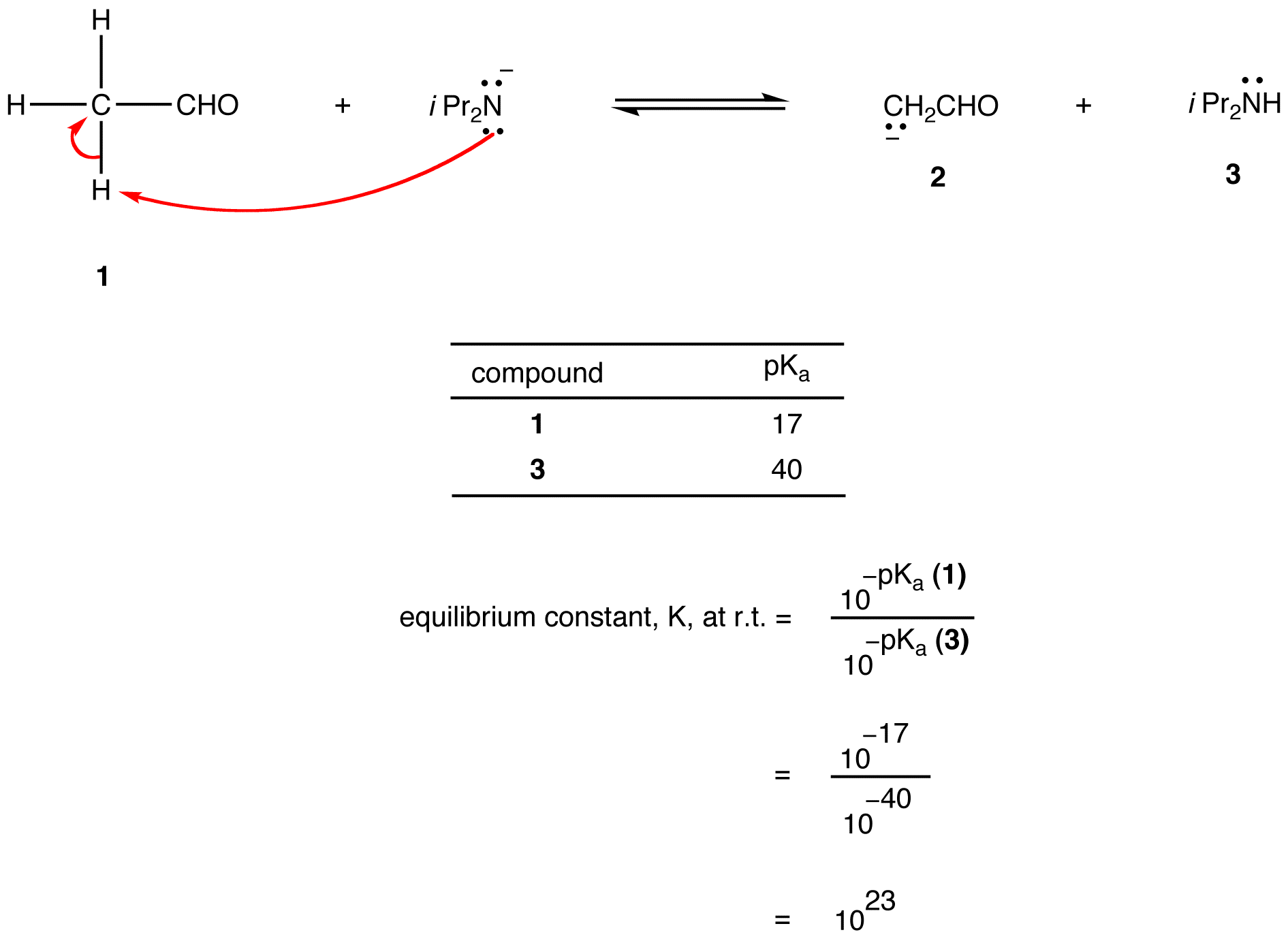Diisopropylamide Ion
( \newcommand{\kernel}{\mathrm{null}\,}\)
Diisopropylamide ion (1), usually prepared as the lithium salt (2), is a strong base but, due to steric hindrance at the electron-rich nitrogen atom caused by the bulky isopropyl groups, a very weak nucleophile.

Diisopropylamide ion is commonly used to convert enolizable aldehydes and enolizable ketones to corresponding enolate ions, for all practical purposes, quantitatively.
eg:

Notice that K at room temperature is very large.

In the reaction, two reactant molecules react to give two product molecules, Hence, ΔSº ≈ 0; ΔGº ≈ ΔH°.
Since ΔG° < 1, ΔH° <1; the reaction is exothermic. Consequently, according to Le Catelier’s principle, the lower the temperature, the higher the equilibrium constant of the reaction.
K at –78°C > 10²³
The reaction, for all practical purposes, is irreversible at –78°C, meaning that diisopropylamide converts 1 to enolate 2 completely.

see also directed aldol reaction



